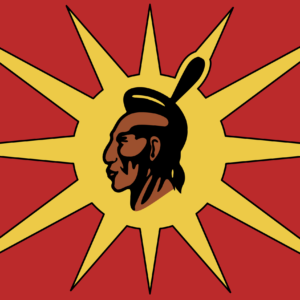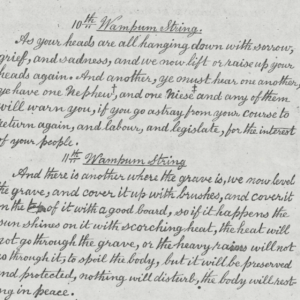
A long time ago – before the invention of the printing press – our ancestors in positions of political leadership would nominate upstanding citizens to carry messages from one community to another. These persons were called runners.
Runners were given the responsibility of carrying specific words, speeches or information to villages throughout the territory. As a symbol of their honour and the job they had to carry out they would bear wampum when they gave the message. This was a clear indication of the nature of that message; whether they were bringing an invitation to a meeting or notification of a ceremony to be held at a certain date.
To put it plainly – the role of a runner was, and is, an imperative responsibility. Runners are bound to be honest, not to spin or manipulate the truth and to never operate under their own personal interests.
The same can be said for those of us in the media – especially Haudenosaunee media. For what merits do we bring our people if we are spinning the truth? Or manipulating messages to prove some point or create the image of something?
Bringing forward the stories of the Haudenosaunee people, the stories of all indigenous people, is a huge responsibility that should not be taken lightly. Journalists of all backgrounds, but specifically those of us indigenous journalists should only ever speak the truth, the whole truth and nothing but the truth.
There are strong ethical guidelines given to us through supportive organizations like the Canadian Association of Journalists and the Native American Journalists Association. First and foremost in these ethical guidelines is the declaration that accuracy is the moral imperative of journalists and that nothing – no deadline, no outside pressure and no other matter – should compromise that.
The Canadian Association of Journalists also puts out further recommendations to its’ membership – calling on all journalists to practise fairness, publish independent thought and avoid conflicts of interest at all costs.
Both the Canadian Association of Journalists and the Native American Journalists Association provide help lines, legal support and other mechanisms to help their members ensure that they are not missing the mark in their work. Both organizations work every day to ensure their members are empowered with help to make the very best decisions possible in reporting with accuracy and integrity.
Because there are so many support systems out there for us as journalists and publishers – it is fair to say that any journalist who falls short of these, the very basics of standards for quality reporting, is not upholding the basic standards of the craft.
Indeed, if they are a Haudenosaunee journalist and also not upholding the basics of being a runner; truth-telling, accuracy, and remaining free of conflict of interest we have to ask – how much farther have they fallen?
News consumers are placed in a huge position of trust when it comes to reading the published word. And the responsibility is on the part of the publisher to ensure that the words published are true, uncompromised and without malice.
For any journalist, falling short of these ethics is unacceptable and a shame for the community they serve.
If you would like more information on the ethical guidelines of journalism you can contact the Canadian Association of Journalists by visiting their website at www.caj.ca. You can also contact the Native American Journalists Association at www.naja.com.






